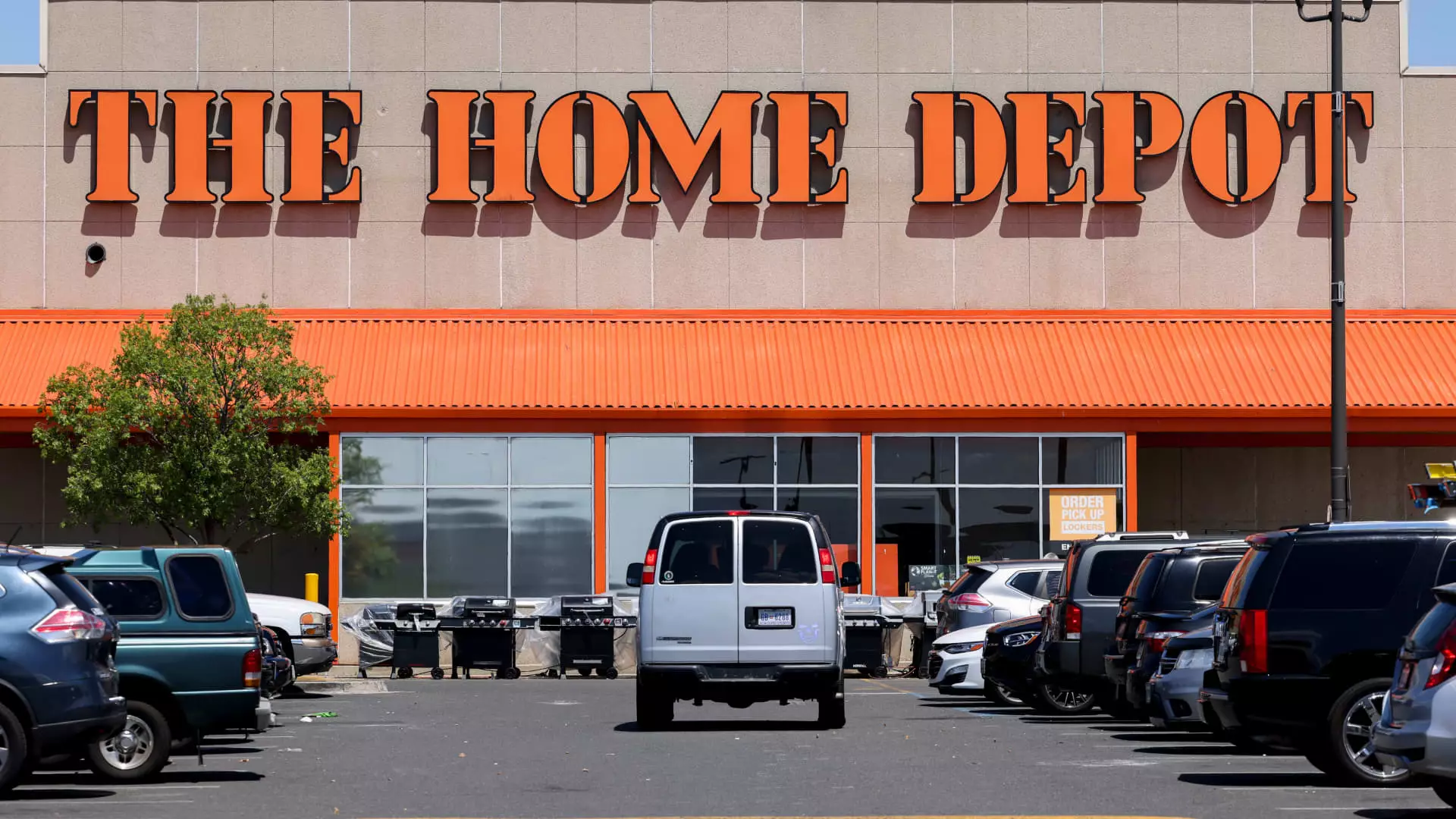Home Depot, one of the largest home improvement retailers in the United States, faced a tumultuous market in 2024, grappling with high interest rates and a hesitant consumer base. However, despite these challenges, the company’s resilience has set the foundation for a promising rebound in 2025. This article delves into Home Depot’s performance throughout 2024, analyzes its strategic moves, and offers insights into what may lie ahead in the coming year.
The year 2024 can be characterized as a rollercoaster ride for Home Depot, with various external economic forces significantly impacting its business trajectory. The initial months of the year were particularly subdued, as elevated borrowing costs hampered customers from undertaking significant home improvement projects. This slowdown in activity was driven by cautious consumer sentiment and high mortgage rates, which restricted spending and dampened demand for big-ticket items.
However, as the year progressed, a shift in investor sentiment began to materialize. In March, the anticipation of potential rate cuts by the Federal Reserve injected a wave of optimism into the market. This renewed faith fueled Home Depot’s stock, which began to rise. Yet, the volatility of investor expectations led to a pullback in May, showcasing the unpredictable dynamic of the economic landscape.
The critical inflection point came in September when the Federal Reserve implemented an aggressive 50 basis point rate cut, primarily to stimulate growth in the housing sector, which had recently experienced a 30-year low in turnover. This strategic move galvanized investor confidence, pushing Home Depot’s shares to new heights, culminating in an impressive intraday high of nearly $440 in November. However, after this peak, the stock faced a subsequent pullback, reminding investors of the worth of vigilance in ever-changing financial markets.
Despite the fluctuations, Home Depot maintained a solid year-to-date performance, with share prices rising 12% overall. More importantly, discussions around future growth highlight the potential recovery in the housing market as 2025 approaches. The anticipated rise in housing turnover, aided by lower mortgage rates, provides a fertile ground for Home Depot’s services and products.
The company’s third-quarter results provided crucial indicators of its strategic positioning. With early signs of recovery emerging, Home Depot seems well-prepared to capitalize on a potential resurgence in home improvement projects. As new home construction is not expected to see a significant upturn next year, residents will increasingly seek upgrades and repairs for existing homes. This shift signifies an opportunity for Home Depot, positioning itself as the go-to destination for supplies needed in renovations, whether for DIY enthusiasts or professional contractors.
In contrast to its rival Lowe’s, Home Depot’s strategic focus on the professional contractor market sets it apart. The recent acquisition of SRS Distribution further strengthens this positioning, expanding Home Depot’s footprint in the independent roofing and building supplies sectors. This move not only diversifies its offerings but also fortifies relationships with key stakeholders in the construction space, ensuring a stronger revenue stream as housing activity picks up.
While the outlook for Home Depot seems optimistic, several factors could influence its potential resurgence. The trajectory of mortgage rates plays a critical role in shaping the company’s future. Should borrowing costs fall below the 6% mark, Home Depot expects its comparable sales to return to positive territory, thereby revitalizing demand for significant home renovation projects.
A supportive monetary policy from the Federal Reserve could further bolster these expectations. Historically, home improvement stocks tend to thrive in periods of rate declines, owing to their inverse relationship in market dynamics. As Home Depot navigates potential challenges from external factors—such as rising long-term bond yields and geopolitical issues affecting sourcing—the resilience derived from its robust U.S. supply chain should help mitigate risks associated with tariff fluctuations.
Home Depot’s navigation through the turbulent waters of 2024 illustrates the company’s capacity to adapt and thrive in challenging circumstances. The signs of recovery coupled with strategic initiatives position it well for future growth in 2025. Investors looking for opportunities in the home improvement sector may find Home Depot to be an appealing choice, motivated by its strong market presence and a clear vision for harnessing the resurgence in housing turnover. As the company braces for the coming year, it remains a focal point in discussions of resilience and growth in an ever-evolving economic landscape.

